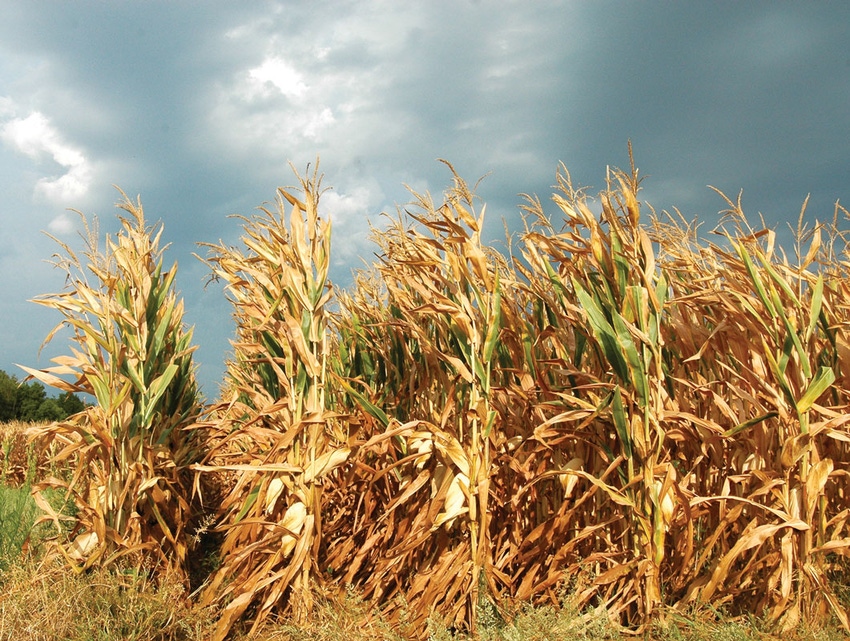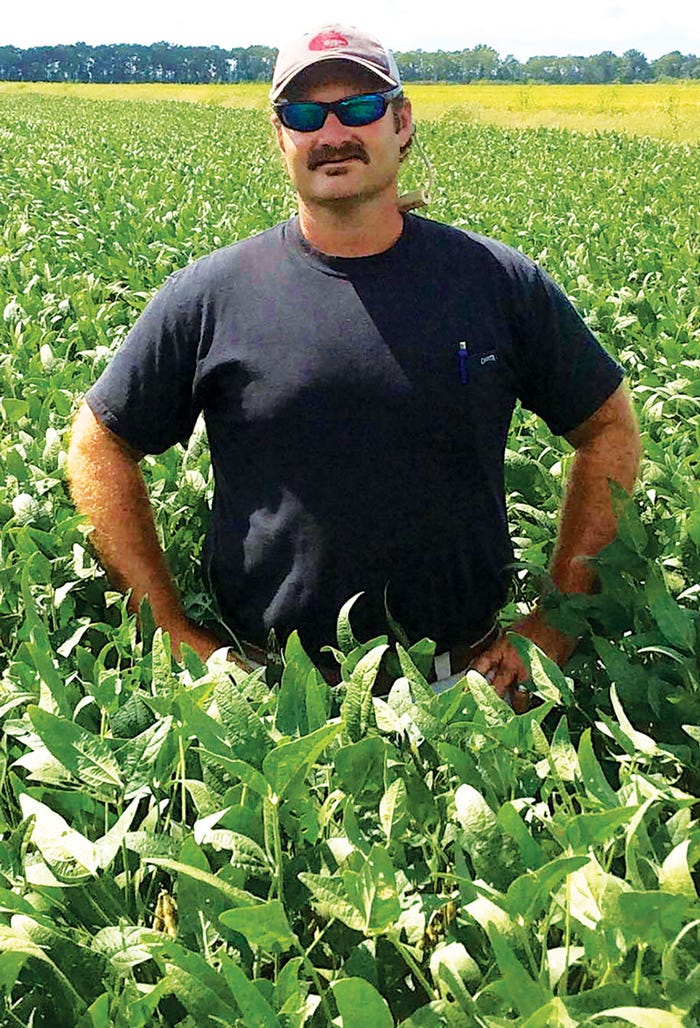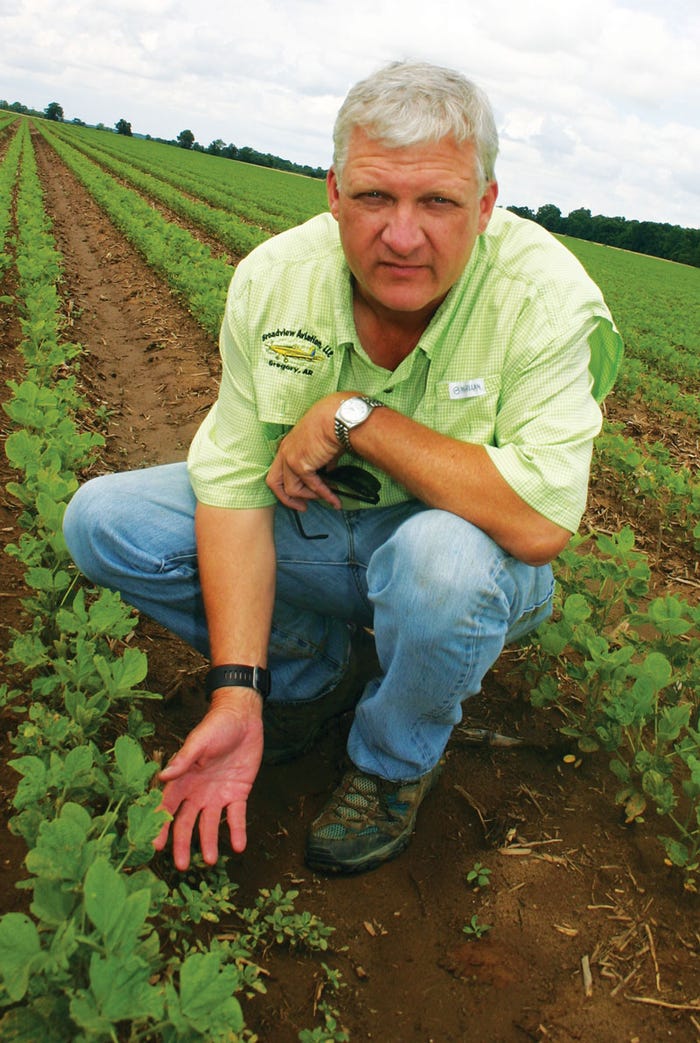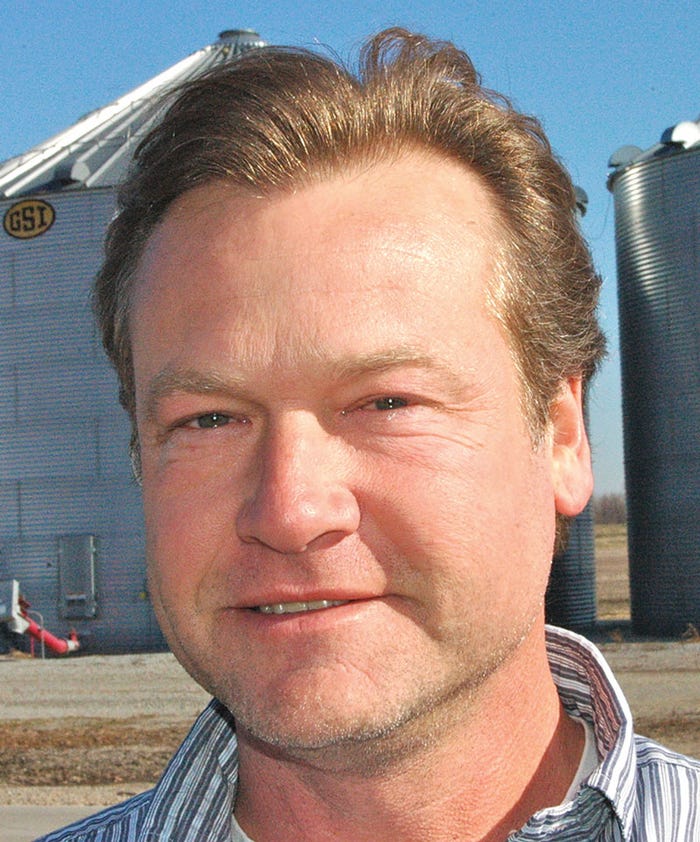October 24, 2019

After horrible planting conditions, delayed harvest, low crop prices and trade wars, Mid-South farmers have had their fill of sleepless nights. And many don’t see comfort in what’s ahead for next year’s crops.
In visiting with growers and crop consultants from across the region, Delta Farm Press found few positive attitudes from producers perturbed with continued troubles at the turn-row.

Johnny DodsonHalls, Tenn.
Johnny Dodson, Halls, Tenn., soybean, cotton and corn grower, has served as American Soybean Association president and experienced many ups and downs. He worries now as much as ever.
“Two or three things keep me up at night,” he says. “With the tariff wars, we’re in a territory we haven’t seen, even going back to the President Carter grain embargo (in 1980). I don’t care if you grow corn, wheat, cotton or soybeans, the tariff situation will create long-term demand destruction.
“Then there’s the struggle with farmers everywhere along the Mississippi River. With the spring flooding, there’s not much there. People are struggling. With crop insurance issues and other government payments, some growers were still planting in early August.”
Dodson says crop flexibility will, hopefully, help him manage 2020 production to an overall profit. “I try to diversify the rotation for corn, cotton and soybeans. I thought we’d have price rallies after the Midwest’s production problems,” he says.
“It may still happen after USDA adjusts its numbers. If there’s a marketing opportunity before the planting season, I’ll try to get some crop booked at a profit. But who knows what input costs will be. The industry needs to understand that the production side will be pinched.”

Lloyd PayneArlington, Tenn.
Lloyd Payne, Arlington, Tenn., farms corn, soybeans and cotton. He’s also stressed over low markets. “Prices are my biggest concern, that and lost markets as a result of trade policy with China,” Payne says. “Fortunately, we have very good crops. Corn and cotton should yield well, and soybeans need a good September to finish.”
Next year’s production could be altered, depending on commodity prices and USDA’s questionable numbers. “The government’s August report on crop acres was a surprise, and a little hard to believe,” he says. “Surely there will be adjustments made heading into 2020.
“Also, we cannot afford to lose any more markets for 2020. Without China buying our cotton and beans, that’s a big deal. Trade agreements must be straightened out. Our cotton needs that market.”
Payne is looking for early pricing opportunities for 2020 production to hedge his profit potential. “I had some early corn sales for 2019,” he says. “I considered making more, but held off because a trade deal was about to be made. We’ve waited and waited. It hasn’t happened (by late August).
“The additional payments designed to offset damage from tariffs helped, but I would rather have good trade and higher prices.”

Stephen LoganShreveport, La.
Stephen Logan farms corn, beans and cotton with his son, Taylor, near Shreveport, La. Stephen’s father, Danny, is also involved in the operation.
“We’re worried about what may happen next,” Logan says. “It’s been too wet, too dry and everything in between. We had a good corn crop early, but it’s not turning out that way. The ear size looks good, but yields are 20 to 25 percent below average. I credit it to the extremely wet spring.
“Cotton looks good, but it faced a lot of insect pressure, which meant higher costs,” he noted. “Even though the soybeans look great, prices and the basis are too low to turn a profit.”
Low prices and high input costs affect his decisions, along with questionable USDA numbers. “I don’t think USDA’s August corn projections were correct,” he says. “The Midwest won’t make the predicted crop. They also suffered from excessive rain and flooding. I believe USDA will make a big adjustment before planting time. If the corn market moved too low, I think it will correct back.”
Logan made early 2020 corn sales before the August report that took markets lower. “I expect to increase corn acres for 2020, assuming I can make more sales at a profitable level,” he said. “We’ll also come back with cotton because we have the infrastructure in place, with gins and our own equipment.
“If not for the trade war, China would be buying heavily in our market. The tariff payments we receive are good, but they’re only about 50 percent of what the market would be paying. That part is frustrating because it is out of our control.”

Justin TurnerMer Rouge, La.
Justin Turner, an independent crop consultant, Mer Rouge, La., is successful if his grower clients are successful. “My biggest concern is keeping my customers in business,” Turner says. “Prices are so depressed for cotton, corn and soybeans. And it’s not getting any cheaper to grow these crops.
“Nearly all crops were late after early-year rains and flooding. It wasn’t as bad as what guys faced in Mississippi, but my growers had several thousand acres that went into Prevented Planting. Also, insect pressure was worse, which meant more insecticide treatments. If we have a good harvest, we can come out in good shape. But high yields are needed if you’re spending that kind of money.”
Tight grower margins are his concerns heading into 2020. “If growers don’t make over 200-bushel corn, 70-bushel beans or 1,200-1,300-pound cotton, they’re in a bind,” Turner says.
“We must increase our knowledge and be more efficient in production to address the situation. That means more networking and continuing education; staying up with new and proven varieties and doing the best we can with fertility. It’s important to have a sound soil test program to manage fertilizer costs as well as yields.
“Also, new herbicide and insecticide technologies can improve production and efficiency. We need that to help save on seed costs and fuel costs.

Perry GallowayGregory, Ark.
Perry Galloway farms corn, soybeans and rice at Gregory, Ark. “Low markets and trade disputes are high on my mind,” says Galloway, who also runs an ag flying service. “After a disruption in planting across many areas, I expected a rally in grain prices, but they never came.
"USDA's July report was negative, and farmers questioned the numbers. The August reports seemed a less true picture,” says Galloway. Recent estimates had corn and bean yield down four to five percent from USDA and he believes that, with the trade unrest, markets have dropped even more.
Along with high equipment costs, Galloway still worries about herbicide resistance issues. “I use Dicamba technology,” he says. “I’m concerned about how to control weeds and problems dealing with the Arkansas State Plant Board’s ludicrous regulations.”
Along with looking for 2020 marketing opportunities, Galloway plans to incorporate more technology to enhance efficiency. “I’m serious about yield mapping and accuracy and knowing how to use the data better,” he says. “I’m looking for ways to save input costs and increase yields.”

John StoryCharleston, Mo.
John Story has had it with bad weather and prices. “Both of them suck this year,” says Story, who farms corn and soybeans at Wolf Island near Charleston, Mo. His land is located both inside and outside a Mississippi River levee.
“These days our falls have become typically so wet you can’t complete fieldwork, and it’s difficult to get the bean crop out. For several years wet weather has continued into the spring. Corn planting keeps getting pushed back. In fact, 2019 was my first year ever with no corn. It was just too wet to plant.”
Story says managing prices is nearly as hard as dealing with weather. “Farmers have always fought the ‘catch 22,’” he said. “When USDA says plant fence-to-fence and feed the world, we’re shooting ourselves in the foot,” he says. “Too much carryover depresses our markets.
“Tariffs are hurting prices. However, I believe, in the long run, they are necessary and should have been done decades ago. But, in the short term, they have not been pleasant. Also, USDA’s July and August crop production numbers don’t add up, considering the number of Prevent Plant acres recorded. It’s almost like a conspiracy.”
Labor is another issue. “I wouldn’t have dreamed there would be a shortage of good farm labor,” Story says. “Many are too lazy to work or have substance abuse problems. I’ve offered to pay more than double the minimum wage and still can’t get good people.”
Story will use more no-till corn and bean production for 2020 to hopefully help offset timing issues caused by wet fields. “Also, I’ve eliminated wheat in the rotation,” he says. “Planting interferes with corn and bean harvest, winters are too wet for timely ground applications and delayed harvest causes late-planted soybeans. With wet weather, there aren’t enough dry periods for all three.
“On my 2019 Prevented Plant acres at least I’m able to finally get some tillage and leveling done to get the land in better shape for spring planting.”

Trey BullockHattiesburg, Miss.
Trey Bullock, Hattiesburg, Miss., crop consultant, worries about weather much of the year, but especially in late summer or fall. “Here in southern Mississippi, it’s the fear of large August afternoon showers or a hurricane,” says Bullock, who works mainly with cotton and peanut producers.
“For farmers, it’s prices on everything,” he said. “We’ll make a good cotton crop but can’t keep doing that with prices this low. That’s what keeps growers awake.
“Fortunately, we have better varieties and technology to help offset things we can’t control. Cotton varieties help overcome severe heat. The genetics can often offset pressure we see when the heat index surpasses 110 degrees.
“We would love to plant later to avoid heat at the peak of the growing season. But down here, it’s nearly always dry several weeks after May 15. If you plant late, it’s tough to make a good stand. We have good tools, with new herbicide and insecticide technologies.
“Yield potential is where it needs to be. Even if it stays at 53 cents a pound, my guys will still plant cotton in 2020 and beyond because it’s a good rotation for peanuts.”
About the Author(s)
You May Also Like




